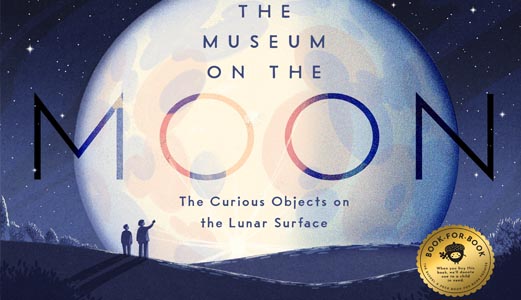Gr 3-6 Readers explore the moon as a museum of memories, equipment, and more through different types of poems that examine the many ways humankind has left its mark on the moon. Each spread features a poem and showcases a moon fact. Different types of poems include a ghazal, an acrostic, and an ABAB rhyme scheme. Facts shared range from the start of missions to the moon to the one book that has been left behind. The poetry and facts complement each other and make for a nice flow of information and fun, resulting in sometimes goofy poetry. For instance, the poem about astronauts going to the bathroom will especially entertain younger readers. Illustrations in a muted palette mostly feature astronauts and other people. Back matter includes a list of humans who walked on the surface of the moon so far, a moon milestones timeline, and additional notes on each of the poems, including websites to learn more about the moon facts.
VERDICT A lovely picture book that mixes poetry and history about the moon.
- Molly Dettmann
School Library Journal
"The poetry and facts complement each other and make for a nice flow of information and fun. A lovely picture book that mixes poetry and history about the moon."
Kirkus
In poems and descriptive notes, a catalog of items left by human visitors to the Moon.
From Neil Armstrong's boot prints to flags, family mementos, golf balls, and bags of poop, humans have been leaving signs of their presence on our nearest neighbor for more than 50 years. While freely admitting that much of it is space junk, Latham urges readers to take a more elevated view and regard the detritus as a record of human aspirations and achievement - easier to do for, say, the memorials for dead astronauts and cosmonauts than the waste collection bags left by multiple Apollo missions. Wares's views of light- and dark-skinned children in street clothes standing on the lunar surface with vacuum-suited astronauts abandon accuracy for symbolism, and many of the poems, as the author notes at the end, are written as examples of various literary forms from triolet and Golden Shovel to pantoum and so come off more as exercises than spontaneous lyrical expressions. Still, there's something that encourages reflection in knowing a falcon's feather and the ashes of a renowned astronomer, not to mention the plaque reading 'We came in peace for all mankind', are up there waiting for our return.
A provocative tally of treasures and trash.
Reading to the Core
Karen Edmisten
bookseedstudio
TeacherDance
A Word Edgewise
Imagine the Possibilities
Karen Eastlund
Celebrate Science
Beyond LiteracyLink
Laura Purdie Salas



